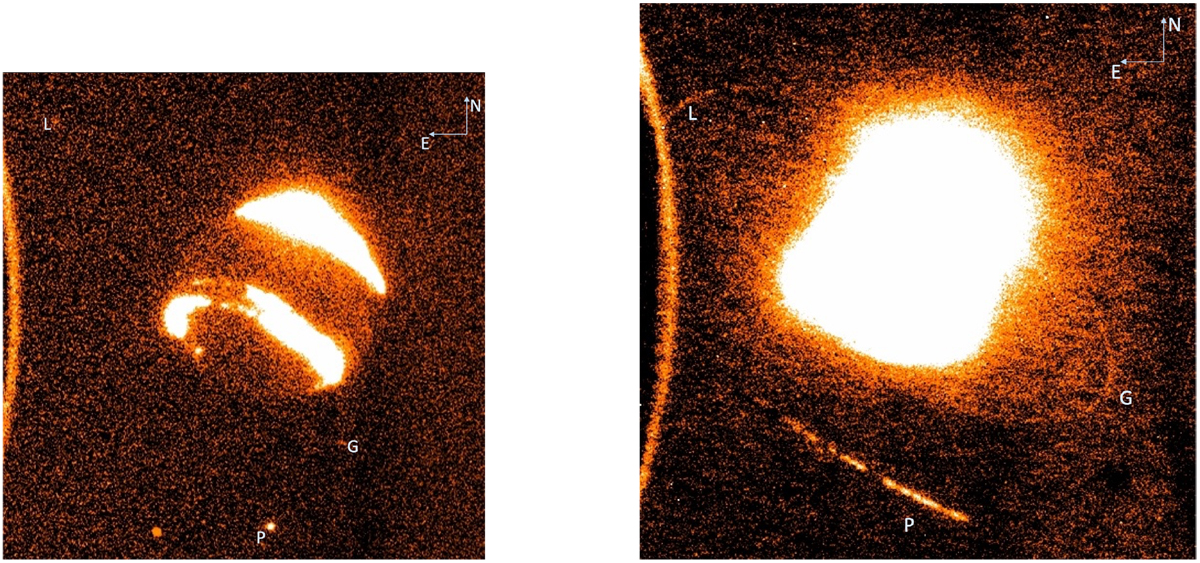Fig. 2

Download original image
Left: single 64-second exposure of Neptune in the BB-Ks band (2.182 μm), 2016-08-23T05:12:52.2635 UT August 23, 2016, revealing the satellites Proteus (P), Galatea (G), and Larissa (L). The frame is 5.39 × 5.92 arcsec2 wide. The point source is due to a bad pixel cluster that is difficult to properly interpolate. Right: image of Neptune’s system obtained by co-adding 68 individual frames of the August 23, 2016, data (72 min and 32 s of total exposure time, between 04:24:50.5202 and 06:43:23.0627 UT). The frame is 6.99 × 6.99 arcsec2 wide. We can see Proteus (P) and Larissa (L) along their respective orbits during this time interval. We can also see the trail of Galatea (G) and the arcs, which evolve along the much fainter Adams ring. The bright arc on the left is due to thermal electronic noise.
Current usage metrics show cumulative count of Article Views (full-text article views including HTML views, PDF and ePub downloads, according to the available data) and Abstracts Views on Vision4Press platform.
Data correspond to usage on the plateform after 2015. The current usage metrics is available 48-96 hours after online publication and is updated daily on week days.
Initial download of the metrics may take a while.


